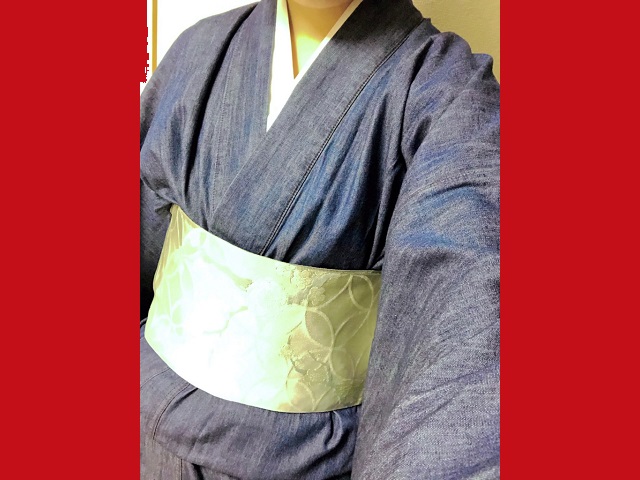
East meets West, but do they get along?
There’s no Japanese garment that’s more Japanese than a kimono. Meanwhile, no other fabric evokes images of the West like denim does, whether the wearer you’re picturing in your mind’s eye is a casually cool American teenager or a literal cowboy.
But can these two fashion icons from opposite sides of the Pacific work together? That was the question that our Japanese-language reporter Udonko has been turning over in her head recently, and she decided that the best way to find out would be to buy a denim kimono to see for herself how it looks and feels.
After a bit of online searching, Udonko settled on a denim kimono from maker Tayu-Tafu. Purchased together with a reversible obi (sash), the bundle came to 8,525 yen (US$78), a very reasonable price when either a kimono or obi alone can easily cost tens of thousands of yen.
This is actually the first kimono Udonko has ever bought for herself, so she also picked out a nagajuban, from manufacturer Kirakukai, for 2,200 yen. The nagajuban is an undergarment you put on first so that the kimono itself isn’t in direct contact with your skin, keeping sweat and body oil away to help keep it clean. This nagajuban is made of polyester and is machine washable.
Finally, Udonko picked up a pack with various pads and cords to help keep the kimono and sash smooth and in place, both while putting the garments on and while wearing them. She paid 3,520 yen, but not each and every item in the pack is absolutely essential, and just like with the sash and nagajuban, if you’re not a complete kimono neophyte you might already have everything you need.
Tayu-Tafu offers denim kimono in a variety of shades of blue, and Udonko opted for a moderate not-too-dark, not-too-light color.
While this wasn’t Udonko’s first time to wear a kimono, it was her first time to tie the sash all by herself. Particularly for women’s kimono sashes there are many, many different ways to tie them, and some enthusiasts sign up for special kimono classes to learn how to create the most extravagant styles. Udonko, though, opted for the method called karuta musubi, or “card tying,” which uses simple straight folds, and after watching a YouTube demonstration, she found it wasn’t much harder than a basic origami pattern.
With the obi tied, Udonko looked at her reflection in the mirror, and to her pleasant surprise, found that her denim kimono doesn’t look strange at all, and is actually quite fashionable in its own unique East-meets-West way.
However, appearance wasn’t Udonko’s only concern. Traditional kimono are made of silk or cotton, which tend to be lighter, more flexible materials than denim, so would her denim kimono be difficult to move around in?
To find out, she performed what seemed like the most appropriate test for a type of clothing strongly associated with the age of samurai: seeing if she could draw a katana while wearing it…and she’s happy to report that this presented no problems whatsoever!
▼ No ninja assassins will be getting the drop on Udonko while she’s dressed in her denim kimono (nor will they be able to identify her as their target).
Given the garment’s eclectic nature, she figured a more modern test was in order as well, so she followed up the unsheathing trial by…
…bouncing up to perform the Uma-pyoi Densetsu dance from horse-girl anime/video game phenomenon Uma Musume.
Once again, the denim kimono passed with flying colors. Granted, it doesn’t allow for a full range of motion for your legs (so she probably won’t be wearing it on her next Kyoto mountain temple hike), but that’s true of any kimono, regardless of the material, since the fabric is cut, and the sash tied, in a way to prevent the robe from coming open and leaving you exposed below the waist.
Not only does the denim kimono look good and feel good, Udonko thinks it also opens up whole new avenues for kimono fashion coordination. Because of denim’s modern, relaxed image, she’s thinking of pairing her demin kimono with comfy sneakers for outings that involve enough walking that they’d be painful in traditional sandals, or maybe sporting a turtleneck underneath the robe once the weather turns cooler. She might even start wearing her denim kimono around the house, since it’s actually pretty warm and cozy, and now we can’t help thinking it’d also look great with one of those Pokémon haori coats worn over it too.
Related: Tayu-Tafu denim kimono, Kirakukai nagajuban
Photos ©SoraNews24
● Want to hear about SoraNews24’s latest articles as soon as they’re published? Follow us on Facebook and Twitter!
[ Read in Japanese ]

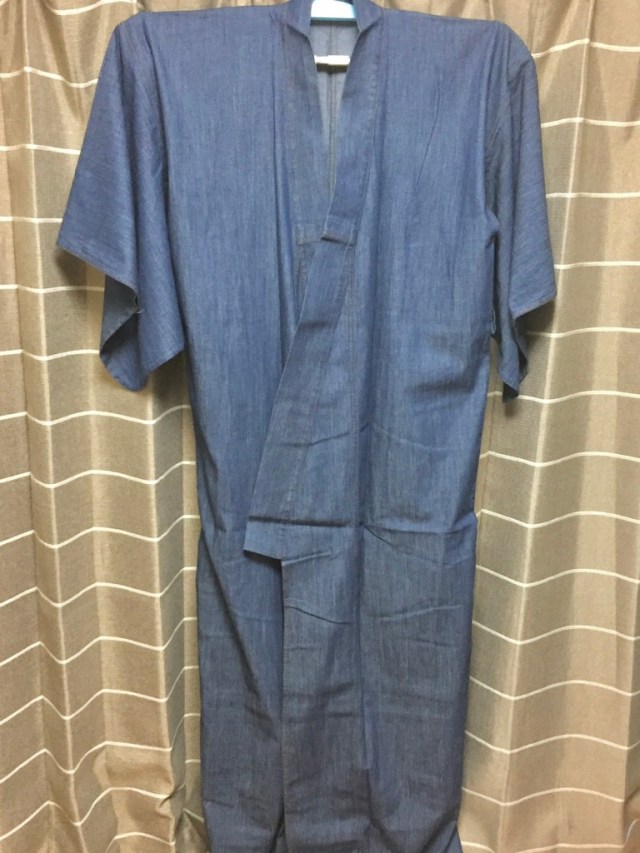
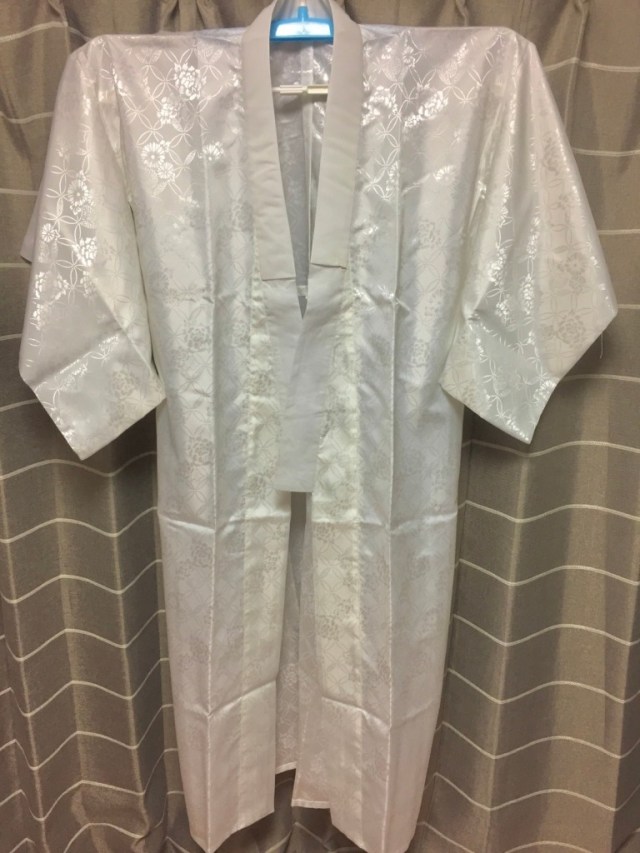
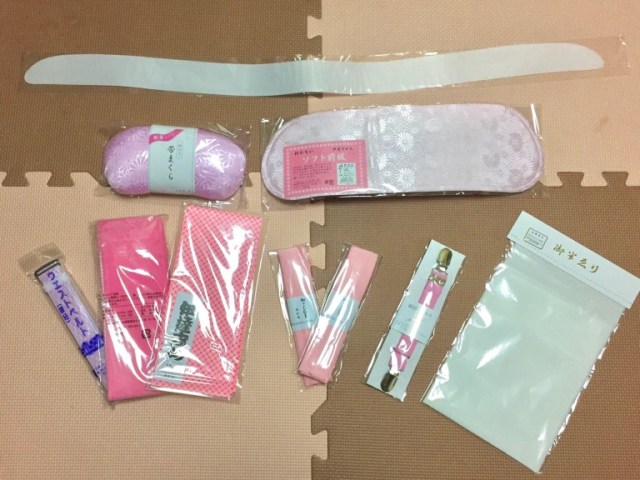
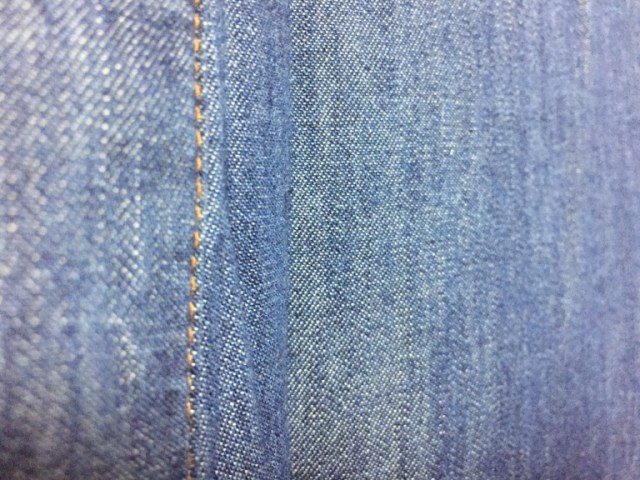
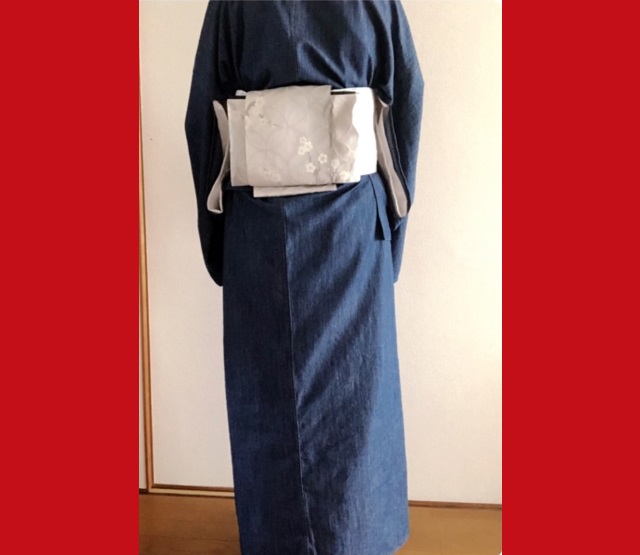


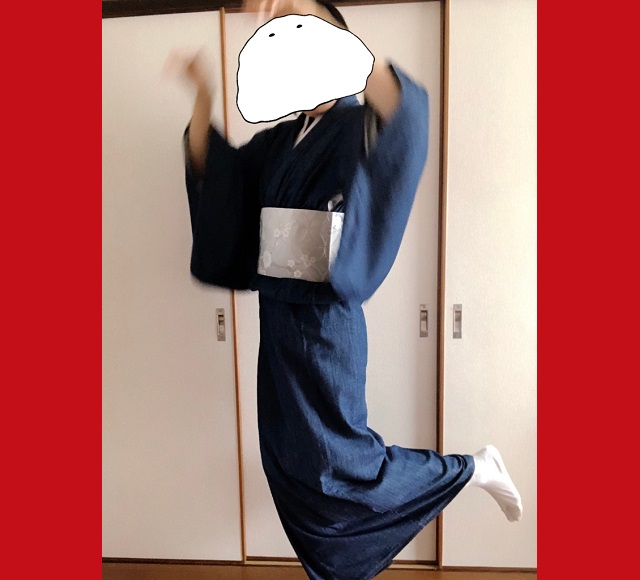
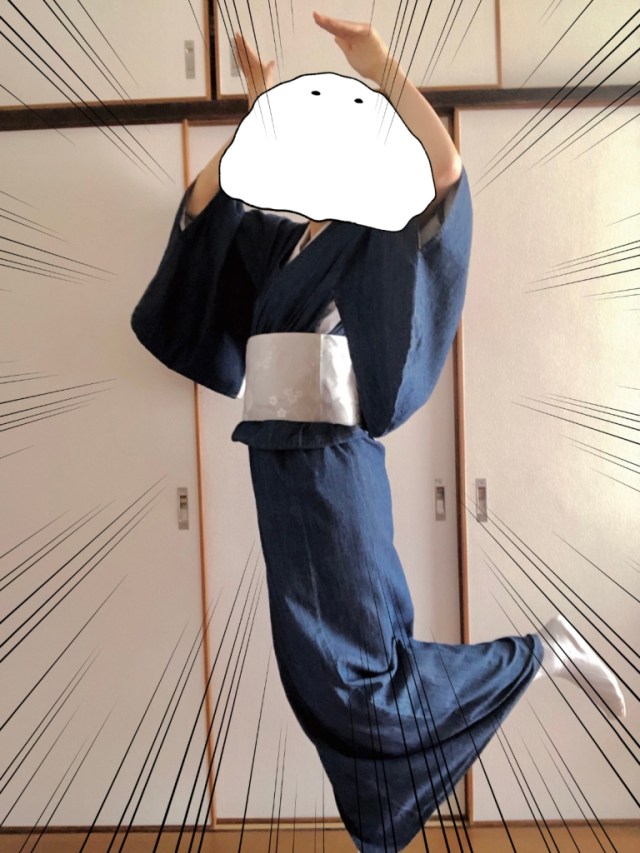
 Is spending 248,380 yen (US$1,840) on an anime boy doll a wise choice? Our fangirl finds out!
Is spending 248,380 yen (US$1,840) on an anime boy doll a wise choice? Our fangirl finds out! Beautiful line of Kimono Pouches let you add traditional Japanese style to any outfit
Beautiful line of Kimono Pouches let you add traditional Japanese style to any outfit Kimono genius turns obi sash into the head of Evangelion Unit-01【Photos】
Kimono genius turns obi sash into the head of Evangelion Unit-01【Photos】 How many otaku penlights do you need to survive a blackout in Japan?
How many otaku penlights do you need to survive a blackout in Japan? Our reporter illustrates their first experience attending a fan photo event with an oshi
Our reporter illustrates their first experience attending a fan photo event with an oshi Red light district sushi restaurant in Tokyo shows us just how wrong we were about it
Red light district sushi restaurant in Tokyo shows us just how wrong we were about it Pokémon Sleep camping suite and guestrooms coming to Tokyo Hyatt along with giant Snorlax burgers
Pokémon Sleep camping suite and guestrooms coming to Tokyo Hyatt along with giant Snorlax burgers Sandwiches fit for a sumo served up in Osaka【Taste Test】
Sandwiches fit for a sumo served up in Osaka【Taste Test】 McDonald’s new Happy Meals offer up cute and practical Sanrio lifestyle goods
McDonald’s new Happy Meals offer up cute and practical Sanrio lifestyle goods Tokyo Tsukiji fish market site to be redeveloped with 50,000-seat stadium, hotel, shopping center
Tokyo Tsukiji fish market site to be redeveloped with 50,000-seat stadium, hotel, shopping center Akihabara pop-up shop sells goods made by Japanese prison inmates
Akihabara pop-up shop sells goods made by Japanese prison inmates Starbucks Japan adds a Motto Frappuccino to the menu for a limited time
Starbucks Japan adds a Motto Frappuccino to the menu for a limited time Japanese ramen restaurants under pressure from new yen banknotes
Japanese ramen restaurants under pressure from new yen banknotes Beautiful Red and Blue Star luxury trains set to be Japan’s new Hokkaido travel stars
Beautiful Red and Blue Star luxury trains set to be Japan’s new Hokkaido travel stars Anime girl English teacher Ellen-sensei becomes VTuber/VVTUber and NFT
Anime girl English teacher Ellen-sensei becomes VTuber/VVTUber and NFT All-you-can-drink Starbucks and amazing views part of Tokyo’s new 170 meter-high sky lounge
All-you-can-drink Starbucks and amazing views part of Tokyo’s new 170 meter-high sky lounge More foreign tourists than ever before in history visited Japan last month
More foreign tourists than ever before in history visited Japan last month French Fries Bread in Tokyo’s Shibuya becomes a hit on social media
French Fries Bread in Tokyo’s Shibuya becomes a hit on social media Studio Ghibli releases new action figures featuring Nausicaä of the Valley of the Wind characters
Studio Ghibli releases new action figures featuring Nausicaä of the Valley of the Wind characters New private rooms on Tokaido Shinkansen change the way we travel from Tokyo to Kyoto
New private rooms on Tokaido Shinkansen change the way we travel from Tokyo to Kyoto Starbucks reopens at Shibuya Scramble Crossing with new look and design concept
Starbucks reopens at Shibuya Scramble Crossing with new look and design concept Studio Ghibli glasses cases let anime characters keep an eye on your spectacles
Studio Ghibli glasses cases let anime characters keep an eye on your spectacles Beautiful Ghibli sealing wax kits let you create accessories and elegant letter decorations【Pics】
Beautiful Ghibli sealing wax kits let you create accessories and elegant letter decorations【Pics】 Studio Ghibli releases Kiki’s Delivery Service chocolate cake pouches in Japan
Studio Ghibli releases Kiki’s Delivery Service chocolate cake pouches in Japan New definition of “Japanese whiskey” goes into effect to prevent fakes from fooling overseas buyers
New definition of “Japanese whiskey” goes into effect to prevent fakes from fooling overseas buyers Our Japanese reporter visits Costco in the U.S., finds super American and very Japanese things
Our Japanese reporter visits Costco in the U.S., finds super American and very Japanese things Studio Ghibli unveils Mother’s Day gift set that captures the love in My Neighbour Totoro
Studio Ghibli unveils Mother’s Day gift set that captures the love in My Neighbour Totoro New Japanese KitKat flavour stars Sanrio characters, including Hello Kitty
New Japanese KitKat flavour stars Sanrio characters, including Hello Kitty New Pokémon cakes let you eat your way through Pikachu and all the Eevee evolutions
New Pokémon cakes let you eat your way through Pikachu and all the Eevee evolutions Disney princesses get official manga makeovers for Manga Princess Cafe opening in Tokyo
Disney princesses get official manga makeovers for Manga Princess Cafe opening in Tokyo Sales of Japan’s most convenient train ticket/shopping payment cards suspended indefinitely
Sales of Japan’s most convenient train ticket/shopping payment cards suspended indefinitely Sold-out Studio Ghibli desktop humidifiers are back so Totoro can help you through the dry season
Sold-out Studio Ghibli desktop humidifiers are back so Totoro can help you through the dry season Japanese government to make first change to romanization spelling rules since the 1950s
Japanese government to make first change to romanization spelling rules since the 1950s Ghibli founders Toshio Suzuki and Hayao Miyazaki contribute to Japanese whisky Totoro label design
Ghibli founders Toshio Suzuki and Hayao Miyazaki contribute to Japanese whisky Totoro label design Doraemon found buried at sea as scene from 1993 anime becomes real life【Photos】
Doraemon found buried at sea as scene from 1993 anime becomes real life【Photos】 Tokyo’s most famous Starbucks is closed
Tokyo’s most famous Starbucks is closed One Piece characters’ nationalities revealed, but fans have mixed opinions
One Piece characters’ nationalities revealed, but fans have mixed opinions We asked a Uniqlo employee what four things we should buy and their suggestions didn’t disappoint
We asked a Uniqlo employee what four things we should buy and their suggestions didn’t disappoint Princesses, fruits, and blacksmiths: Study reveals the 30 most unusual family names in Japan
Princesses, fruits, and blacksmiths: Study reveals the 30 most unusual family names in Japan Comfy kimono hakama roomwear steps into the modern era with stylish new Reiwa Edition【Photos】
Comfy kimono hakama roomwear steps into the modern era with stylish new Reiwa Edition【Photos】 Our search for Kyoto Station’s cheapest souvenir reveals a surprisingly sweet find
Our search for Kyoto Station’s cheapest souvenir reveals a surprisingly sweet find Kimono dress shirt is a sleek reimagining of Japan’s most feminine type of traditional clothing
Kimono dress shirt is a sleek reimagining of Japan’s most feminine type of traditional clothing Tokyo designer’s DIY Space Invaders kimono is retro fashion in more ways than one
Tokyo designer’s DIY Space Invaders kimono is retro fashion in more ways than one Ariel and Jasmine star in Disney princess pseudo-kimono line from Japanese fashion brand【Photos】
Ariel and Jasmine star in Disney princess pseudo-kimono line from Japanese fashion brand【Photos】 Kimono Project is creating a different kimono to represent every country on Earth【Photos】
Kimono Project is creating a different kimono to represent every country on Earth【Photos】 We got a massage and talked games at Tokyo clinic made for and run by otaku
We got a massage and talked games at Tokyo clinic made for and run by otaku New magazine focused on modern and casual kimono styles launched this month
New magazine focused on modern and casual kimono styles launched this month Kimono to keep, dressing service, unlimited beer, one of Japan’s best views all in one package
Kimono to keep, dressing service, unlimited beer, one of Japan’s best views all in one package Busty or boobless? Japanese Twitter debates which makes for more beautiful kimono anime art
Busty or boobless? Japanese Twitter debates which makes for more beautiful kimono anime art New spring and summer line of Outdoor Kimono offers a traditionally modern way to chill outside
New spring and summer line of Outdoor Kimono offers a traditionally modern way to chill outside My summer kimono Totoro! Ghibli mascot and Kiki co-star grace beautiful anime yukata【Photos】
My summer kimono Totoro! Ghibli mascot and Kiki co-star grace beautiful anime yukata【Photos】 Kim Kardashian drops plans to call new fashion brand Kimono Solutionwear
Kim Kardashian drops plans to call new fashion brand Kimono Solutionwear Japanese upcycle brand makes ’80s obi sandals in collaboration with United Tokyo 【Photos】
Japanese upcycle brand makes ’80s obi sandals in collaboration with United Tokyo 【Photos】 New crowdfunding project from Japan mixes COVID-19 comedy with a touch of Kyoto craftsmanship
New crowdfunding project from Japan mixes COVID-19 comedy with a touch of Kyoto craftsmanship Kimono rental shops in Kyoto and Nara offer Japanese-style hijabs to buy or rent
Kimono rental shops in Kyoto and Nara offer Japanese-style hijabs to buy or rent
Leave a Reply